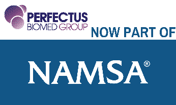Abstract
A flexible methacrylate powder dressing (Altrazeal®) transforms into a wound contour conforming matrix once in contact with wound exudate. We hypothesised that it may also serve as a drug delivery vehicle for antiseptics. The antimicrobial efficacy and influence on bacterial growth kinetics in combination with three antiseptics was investigated in an in vitro porcine wound model. Standardized in vitro wounds were contaminated with Staphylococcus aureus (MRSA; ATCC 33591) and divided into six groups: no dressing (negative control), methacrylate dressing alone, and combinations with application of 0.02% Polyhexamethylene Biguanide (PHMB), 0.4% PHMB, 0.1% PHMB + 0.1% betaine, 7.7 mg/mL Povidone-iodine (PVP-iodine), and 0.1% Octenidine-dihydrochloride (OCT) + 2% phenoxyethanol. Bacterial load per gram tissue was measured over five days. The highest reduction was observed with PVP-iodine at 24 h to log10 1.43 cfu/g, followed by OCT at 48 h to log10 2.41 cfu/g. Whilst 0.02% PHMB resulted in a stable bacterial load over 120 h to log10 4.00 cfu/g over 120 h, 0.1% PHMB + 0.1% betaine inhibited growth during the first 48 h, with slightly increasing bacterial numbers up to log10 5.38 cfu/g at 120 h. These results indicate that this flexible methacrylate dressing can be loaded with various antiseptics serving as drug delivery system. Depending on the selected combination, an individually shaped and controlled antibacterial effect may be achieved using the same type of wound dressing.
